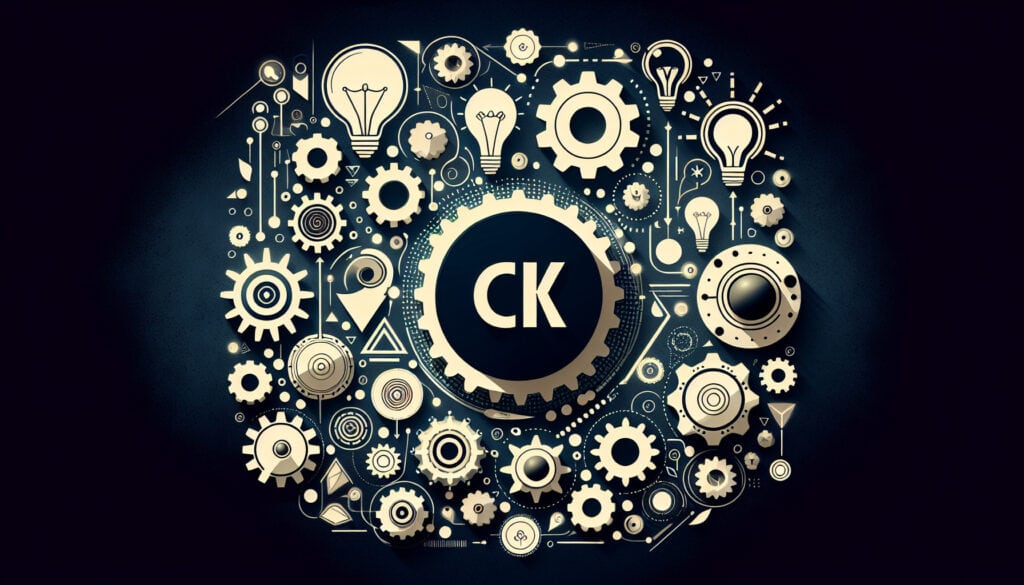A design theory and methodology (Concept-Knowledge Theory) that models the creative thinking process to generate innovative products and services.
- Methodologies: Customers & Marketing, Ideation, Product Design
CK Method

CK Method
- Agile Methodology, Creativity, Design Process, Design Thinking, Human-Centered Design, Innovation, Iterative Development, Prototyping, Value Proposition
Objective:
How it’s used:
- It operates by distinguishing between two spaces: the Concept space (propositions that are not yet true) and the Knowledge space (propositions with a logical status). The method involves iterating between these two spaces to create novel concepts.
Pros
- Provides a structured framework for innovation and creativity, helps to move beyond conventional thinking, and can lead to radical or breakthrough innovations.
Cons
- Can be highly abstract and theoretical, requires specialized training to apply effectively, and may be too complex for simple ideation tasks.
Categories:
- Ideation, Problem Solving, Product Design
Best for:
- Generating highly innovative or breakthrough concepts by structuring the creative reasoning process.
The CK Method is applicable across a wide range of industries, including consumer electronics, automotive design, healthcare technology, and software development, where innovation is a driving force for success. In its application, the methodology typically engages cross-functional teams during the ideation and prototyping phases of product development, allowing diverse participants, such as designers, engineers, marketers, and researchers, to collaborate and contribute their unique perspectives. This interdisciplinary collaboration can lead to more creative and viable solutions. Notably, in the initial stages of product design, teams are encouraged to engage in iterative cycles between the Concept space and the Knowledge space, assessing the feasibility of their ideas while simultaneously enhancing them with information derived from existing knowledge. For example, an automotive company might utilize the CK Method to explore the integration of AI into vehicle systems, generating proposals for features that enhance safety and user experience while also testing these concepts against established engineering principles and market trends. The structured nature of the CK Method not only facilitates the exploration of radical ideas but also ensures that these ideas can transition into realistic, achievable products, thus bridging the gap between theoretical possibilities and practical applications.
Key steps of this methodology
- Identify a problem or opportunity to explore within the product design context.
- Generate propositions in the Concept space that offer potential solutions or innovations.
- Assess and refine these propositions through logical reasoning and validation within the Knowledge space.
- Iterate between the Concept space and Knowledge space, continuously refining propositions based on emerging insights.
- Develop a selection of robust concepts that hold potential for further development or implementation.
- Evaluate the chosen concepts against feasibility, market potential, and alignment with strategic objectives.
- Prepare the refined concepts for prototyping or further experimentation, ensuring they are positioned for real-world application.
Pro Tips
- Incorporate feedback loops between concept and knowledge spaces to refine propositions iteratively and avoid premature convergence.
- Utilize visual mapping techniques to represent relationships between concepts and knowledge, stimulating unconventional connections.
- Engage cross-disciplinary teams during the process to leverage diverse perspectives, enhancing the scope of innovation potential.
To read and compare several methodologies, we recommend the
> Extensive Methodologies Repository <
together with the 400+ other methodologies.
Your comments on this methodology or additional info are welcome on the comment section below ↓ , so as any engineering-related ideas or links.
Historical Context
1949
1950
1950
1960
1960
1960
1960
1940
1950
1950
1958
1960
1960
1960
1960
(if date is unknown or not relevant, e.g. "fluid mechanics", a rounded estimation of its notable emergence is provided)















Related Posts
METS to Calories Calculator
Meta-Analysis
Message Mapping
Mental Model Diagrams
Maximum Acceptable Pushing and Pulling Forces
Material Requirements Planning (MRP)